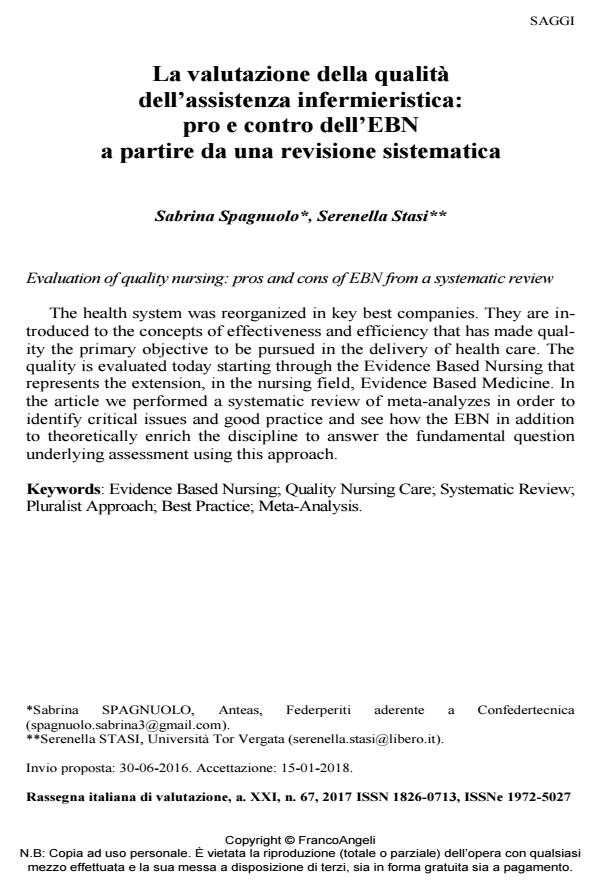Evaluation of quality nursing: pros and cons of EBN from a systematic review
Journal title RIV Rassegna Italiana di Valutazione
Author/s Sabrina Spagnuolo, Serenella Stasi
Publishing Year 2018 Issue 2017/67
Language Italian Pages 21 P. 24-44 File size 481 KB
DOI 10.3280/RIV2017-067003
DOI is like a bar code for intellectual property: to have more infomation
click here
Below, you can see the article first page
If you want to buy this article in PDF format, you can do it, following the instructions to buy download credits

FrancoAngeli is member of Publishers International Linking Association, Inc (PILA), a not-for-profit association which run the CrossRef service enabling links to and from online scholarly content.
The health system was reorganized in key best companies. They are introduced to the concepts of effectiveness and efficiency that has made quality the primary objective to be pursued in the delivery of health care. The quality is evaluated today starting through the Evidence Based Nursing that represents the extension, in the nursing field, Evidence Based Medicine. In the article we performed a systematic review of meta-analyzes in order to identify critical issues and good practice and see how the EBN in addition to theoretically enrich the discipline to answer the fundamental question underlying assessment using this approach.
Keywords: Evidence Based Nursing; Quality Nursing Care; Systematic Review; Pluralist Approach; Best Practice; Meta-Analysis.
Sabrina Spagnuolo, Serenella Stasi, La valutazione della qualità dell’assistenza infermieristica: pro e contro dell’EBN a partire da una revisione sistematica in "RIV Rassegna Italiana di Valutazione" 67/2017, pp 24-44, DOI: 10.3280/RIV2017-067003